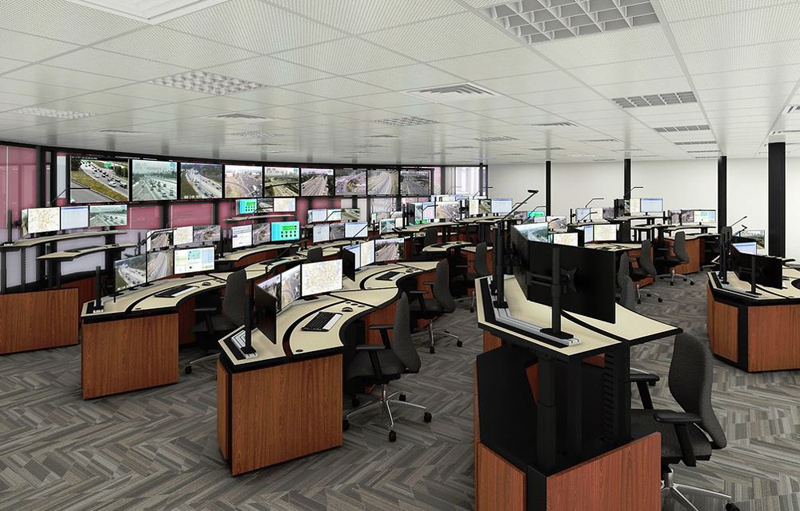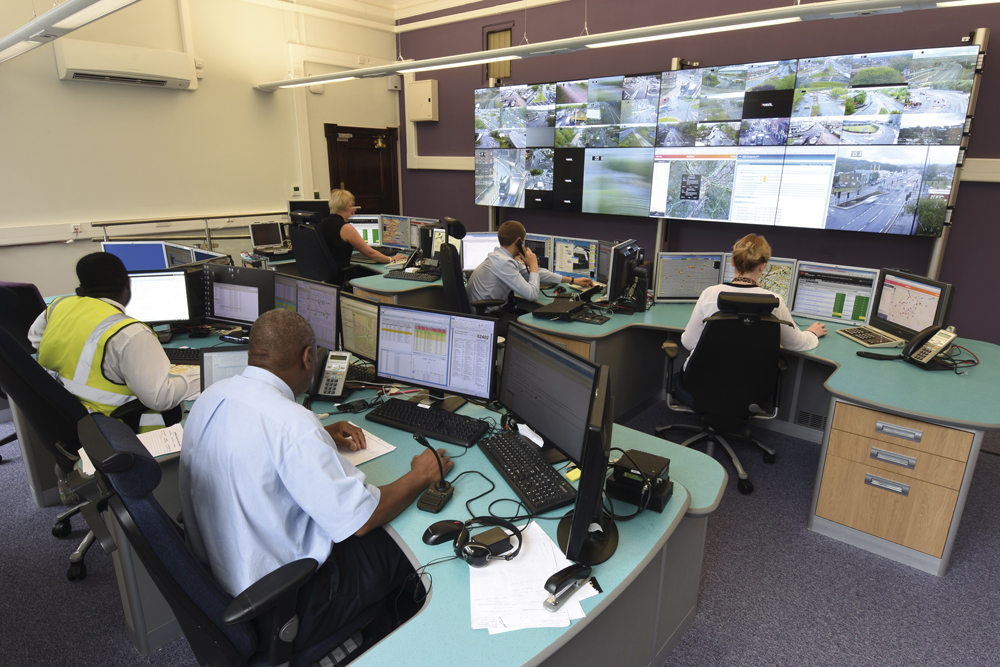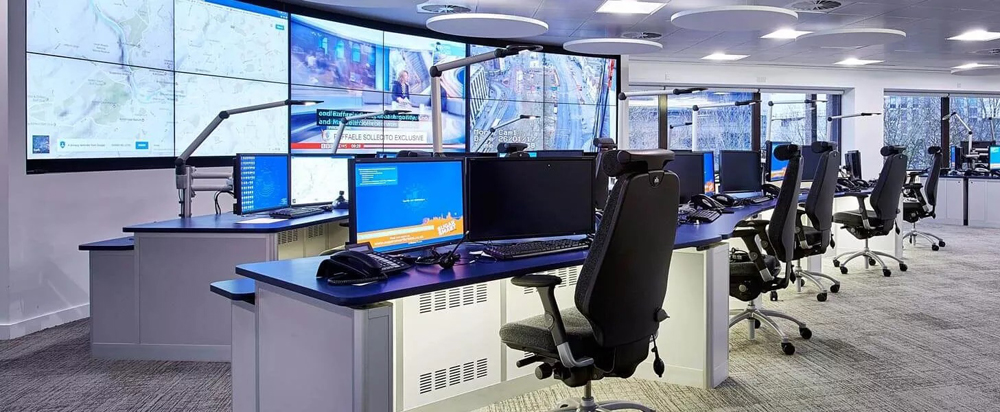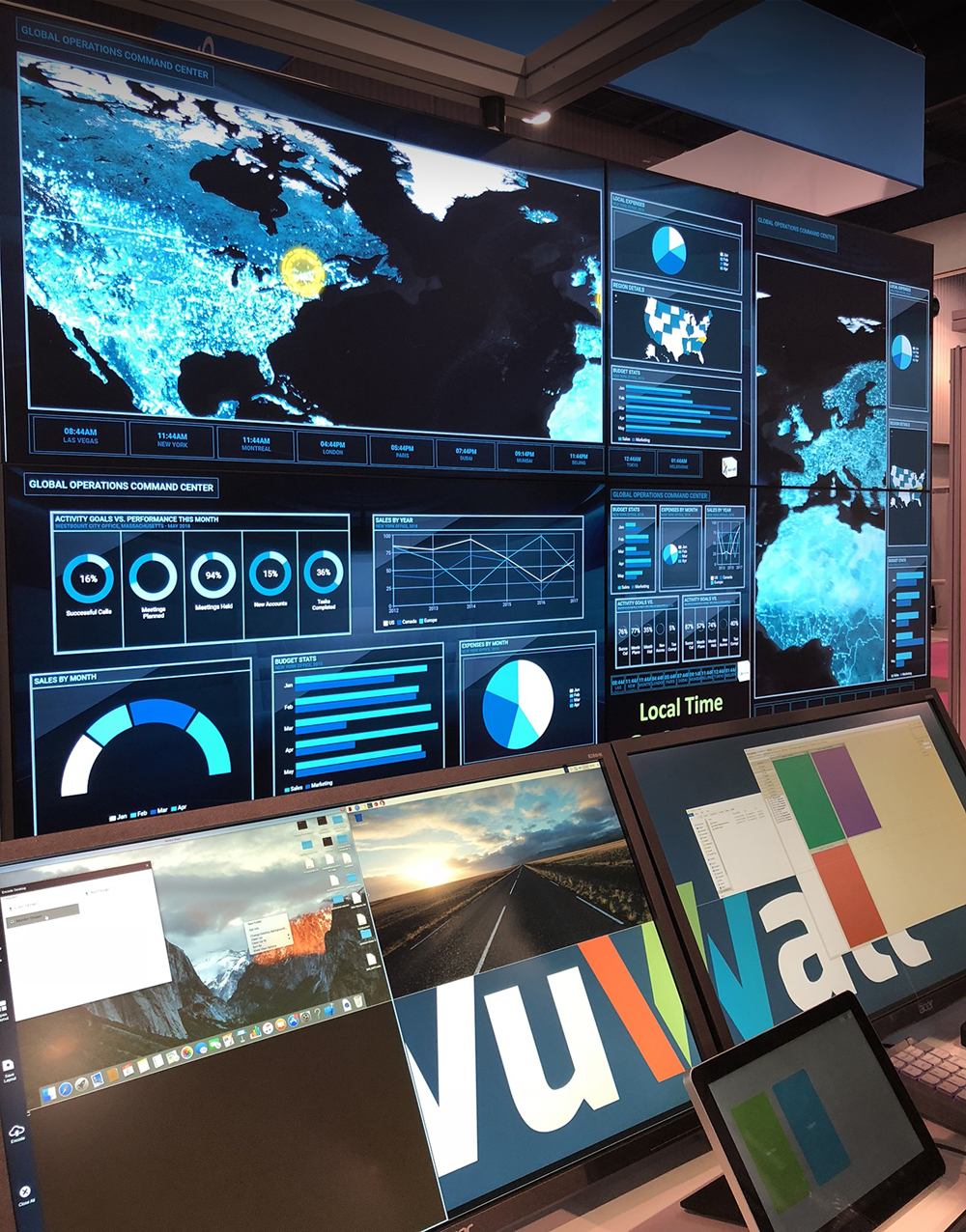
Sitting in a traffic control centre can be a stressful occupation: information can be taken from any number of sources and displayed in a potentially dazzling array of screens and interfaces. Status updates and alarms, images from multiple TV cameras and readings from hundreds – perhaps thousands - of sensors all feed into a data melting pot.
But amid all this input, how can operators be sure they won’t miss an incident on the road which could prove fatal or snarl up an entire network simply because they ‘can’t see the wood for the trees’?

Control room technology providers are only too aware of this problem. “We hear more and more about information overload,” says Brent Leimer, Winsted director of marketing. “We live in the age of Big Data and there is no shortage of information to analyse and process. Critical information can get lost in the noise.”
“A control room operator can only handle so much information at once,” agrees Paul Vander Plaetse, founder and CEO at VuWall. “The ever-increasing amount of information comes with a growing number of tools to filter and automate the management of this information. Thus, the biggest challenge for the operators is the constant process of learning new tools and new processes implemented to help him cope with the information, while staying productive and focused on their mission and not on the technology.”
Cognitive challenges
Not only do today’s traffic and transport control room operators have access to a plethora of data sources at their fingertips, which they can choose to display on their video walls – but the amount of available data is constantly increasing due to the Internet of Things providing information from more and more field devices and sources, points out Steve Murphy, managing director of UVS.
“Also, the amount of CCTV available to operators is also generally increasing and now includes mobile CCTV from a range of sources including transport personal body-worn cameras, helicopters and drones,” he continues. “With so much data available to control room operators, when it is required to be viewed and shared amongst co-workers, due to a specific event occurring, locating it, and making it instantly available to everyone can be a time-consuming task.”

“There is an immense increase in the amount and type of data that the operators need to handle,” says Mehmet Kaya, EMEA Sales vice president for control rooms, Barco. “This brings ergonomic and also cognitive challenges to operators who need to manage mission-critical processes whereby a small mistake could result in huge losses in different terms.”
Overcoming the potential information overload issue can be achieved in a number of ways. However, insists Murphy: “Increasing the size of the video wall to allow all this added data to be constantly displayed is not the answer.”
Instead, more emphasis needs to be given to exactly how people carry out their operations.
“As software developers, we need to pay attention to the way operators work and to develop products that are so intuitive that they barely require any training,” says Vander Plaetse. “Software products must be built on an open and modular architecture so that they can follow the evolution of the visualisation infrastructure of the control room. The goal is to make it easy for operators to control what they see when they need to see it, and that can only happen if all their tools are interoperable and can be controlled from a simple, easy-to-use interface.”
Data visualisation
UVS’s technology is in operation in major UK traffic installations including Sheffield, Bristol, Glasgow, and in all Highways England’s regional operations centres. The company says it has developed integration features within its control room video walls, developed over time to suit specific transport and traffic control room operations and designed to enhance the activities of operators.

“These allow connections to external traffic monitoring and auxiliary systems so that the decision on what critical data needs to be displayed, and where it can be taken by the external system’s algorithms and commands, can be sent to the video wall system to display the relevant data,” Murphy says.
In short, this means attention will be focused. “This data will typically be displayed within a specific area of the video wall,” he adds. “Operators still have dynamic control of the video wall to display other content they may require for the specific scenario that is unfolding.”
In a similar vein, Kaya insists: “Barco is enabling a mission-critical decision-making process by collecting, distributing and visualising the available data at the right time in the right format.” The company says it offers networked visualisation solutions and related services “to make sure operators view better, share faster and resolve quicker”.
It’s not just about hardware and software: for Winsted, comfort is also an important factor in achieving the required levels of concentration in traffic control environments. “We provide ergonomically-correct technical furniture and console solutions so the operators remain healthy, comfortable and alert,” explains Leimer. “The goal is to help the operators reduce response times, improve decision-making and maximise situational awareness.”
The control room is a unique environment and can be very demanding on the operators, he continues, which is why Winsted puts an emphasis on technical furniture and console solutions which help operators utilise the technology more effectively. “All the parts need to work in harmony to be truly effective: the operators utilise the technology to carry out the mission of the control room,” he continues. “Fatigue, discomfort and distractions can lead to disruptions in workflow and gaps in situational awareness. No control room is fully-optimised until the human factor is considered. That is where we come in. Our mission is to improve the work lives of the control room operator with ergonomic solutions that keep them happy, healthy and productive.”
Real-time images
José Luis Añonuevo, control systems operations manager in the transportation market at Indra, insists that operators of the control centres using Indra Mova solutions - whether they are on ITS, tolling, enforcement or tunnel operations - can focus on managing the most serious aspect at a given moment, even though they might have several screens and lots of information.

He says Indra’s Horus software provides them with tools to achieve that focus. “Imagine a vehicle stopped in a tunnel or on the shoulder of a road,” Añonuevo says. “Horus automatically makes them look at that incident, selecting the appropriate camera, orienting it automatically towards the scene of the incident, showing them real-time images of it, proposing a preconfigured action plan for that type of incident, for that area or for that tunnel, to solve it in the shortest possible time.”
This could be making a call to the emergency services, instructing maintenance patrols, changing signalling on the variable message signs or activating the public address system. “The operator only has to let himself be guided by the system,” he goes on. “Technology changes ‘inside’ but ‘outside’, vis-à-vis the user, it is constantly evolving to increase ease of use for operators. Once upon a time, traffic information came from a series of sensors installed on the road. Now multiple data from multiple sources, as well as those sensors, are mixed that allow the operator to have the information in the same way but with an incomparable richness, with predictions in real time - in a summary scorecard, for example - that allows you to know at a glance if everything is going either on a 40-50km/h bypass or if there is going to be a problem to act on to avoid it.”
Speed of reaction
As well as the issue of information overload, the industry will need to deal with other challenges – such as security – and, in a post-Covid environment, not least, around how we work. “It is clear that we will see that cybersecurity, hybrid working, multi-site collaboration and cloud are also key themes that control room managers will be facing,” Kaya concludes.

But some things remain constant. Añonuevo points out that speed of reaction remains perhaps the one thing that traffic managers must achieve above all else. He says for the last 30 years Indra’s software has included simulation training tools to help operators remember and refresh what they need to do when a serious situation arises. “Most of the time, the agile and efficient management of the systems and the operators in the control rooms save lives in these situations, since they make the emergency services arrive soon and soon the affected users are attended. They therefore have to be prepared to respond in the best possible way, in the shortest possible time.”
He concludes: “The biggest problem that operators in control rooms face is being prepared for the sudden change that occurs in the need for management when there is a real problem – such as a multiple accident or a fire in a tunnel - as opposed to the normal, boring or periodic, predictable situations that make up 99% of their time.”





